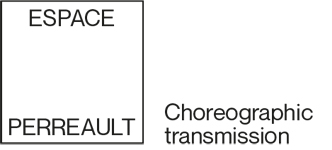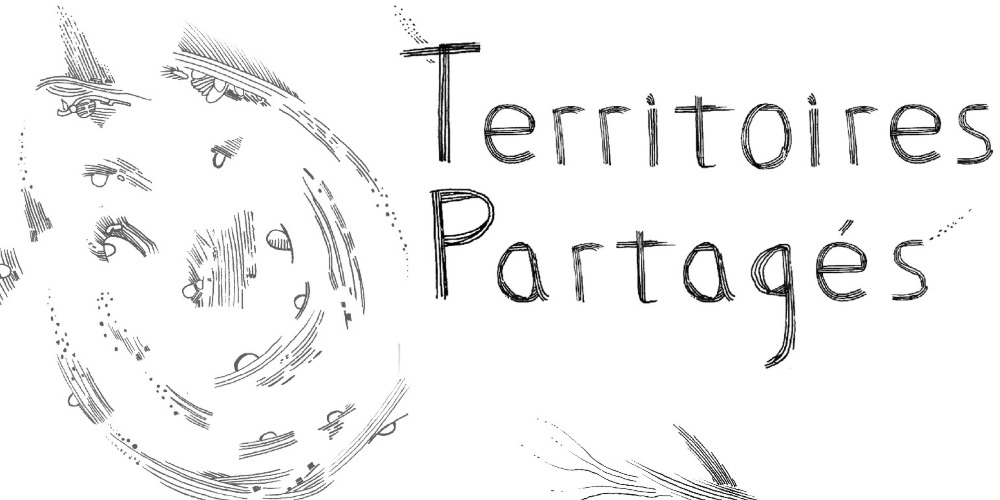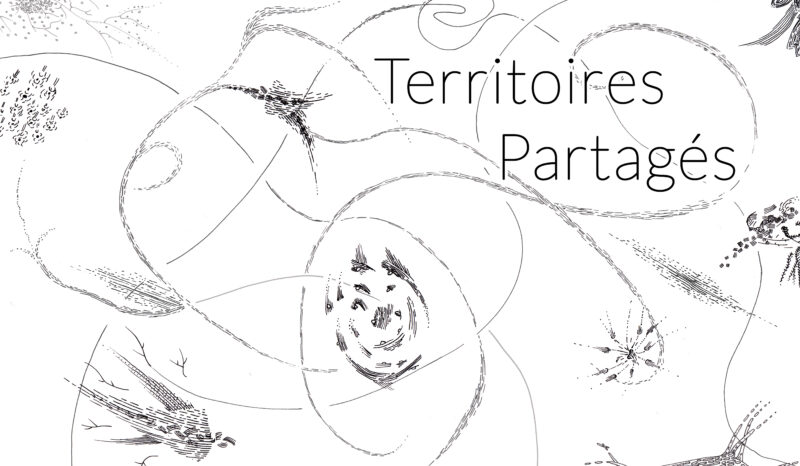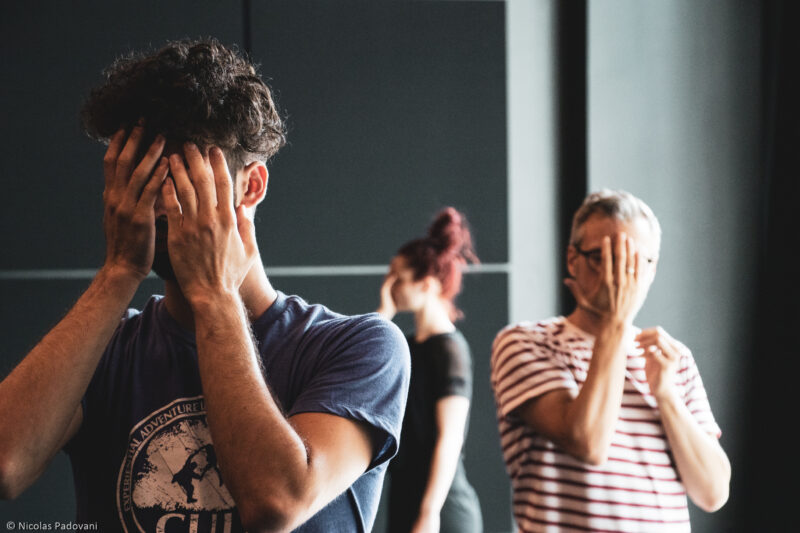Interview
Territoires Partagés – Interview with Peter Boneham
One Working Title: Today and Today and Today
Peter Boneham’s Teaching Practice by Marie Claire Forté, Peter Boneham and guests
January 2019
Part articulation of movement principles, part pretext to hang out with one of my favourite avant-garde artists, part research on how to write a teaching practice, part conversation on teaching and life, this writing aims to capture something of Peter Boneham’s sixty-year œuvre as a dance teacher. Below are some excerpts from the book-in-process. – Marie Claire Forté
Dancing
Why are you here?
K.G. Guttman: The succinct, vicious brilliance of this question – how it hits on so many levels so quickly. Existentially, we could all weep. How seriously do you want something from the now of class? What is the specific “how” of your desire? Is this Peter’s insistence on rigour? That anyone who isn’t 100% HERE can get the fuck out?
Never take something for granted. Listen.
Use only the energy you need. Don’t wreck your body. You only need the energy to do the exercise – you’re not trying to do an Olympic feat and win a medal. More is not best; enough is best.
Marie Claire Forté: Don’t work the muscle, work the energy.
Against the Wall
The wall is a simple map for understanding the weight of the body.
In a parallel position, feet open hip-width apart, lean against a wall, heels a slight distance from the wall.
Is the wall symbolic? Is it a support? Am I trying to break through the wall? None of the above! The wall is where you can place yourself, where you’re always looking forward, thinking forward. Right away, position yourself in a forward-thinking mode.
Feel the back of the head, the back and the rear touching the wall. Keep support from the top of the pelvic bones to the back of the ribs. Using the weight of the head, the shoulders and the ass, relax the thighs and let the knees bend.
Alanna Kraaijeveld: Or, drop your big fat ass.
Then place a hand under your ass, another under the back of the skull and lift those weights to rise back up.
Understand the ease in releasing weight as you go down. Use the energy you need to lift the weight back up.
FUN
Fun? (Frowning with a little smile.) Fun is not a frivolous thing to me. It’s a release. Fun enables me to take risks and not be ridiculed because I’ve already laughed at myself. Insecurity sometimes goes hand in hand with fun.
…
Jimmy (James Waring) was probably the first teacher that made me realize that you don’t need instructions to figure things out, you can just do it yourself. He was my first thinking teacher.
He came up to Montréal from New York around 67 or 68. I had studied with him for about a year when I was in New York. Rachel Brown had commissioned a choreography from him in Winnipeg. He called me, told me he was coming to Canada and offered to teach, even if there was no money.
Jimmy was weird in a magical, wonderful way. He was like a mechanical doll: you’d wind him up and words of wisdom would fly out of him. It was like having a ghost or a spirit around. He didn’t walk, he glided. He didn’t levitate, but he sort of did. We were friends.
He made me understand: there is no such thing as a good teacher. You can have a lot of information, but the person you’re presenting it to is the one who can apply it. He made me realize teaching was much more than how to hold the body or technical feats… Dancing encompasses life. What is society asking of you, what artists came before you, what interests you?
…
August 2016
Marie Claire: How do you think we should keep working this book?
Peter: I’m not sure it’s a book, are you? I see it more as a Girl or Boy Scout Guide. People should enjoy reading it, but it should also make us question what we want from a class situation or a working environment.
Marie Claire: This documentation and writing process is giving the creative and choreographic time to your dance class I didn’t have time to give it when I was taking it every day.
Peter: When you say the documentation is like choreography, I can sit with it. I believe in choreography. It’s not just the hours in the day in the studio, it’s the twenty-four hours a day you live with your questions and desires.
January 2019
Alanna: Where can new pedagogies that respond to the milieu emerge? What shapes our vision of a relevant dance class? We’re in a moment where we could stand to be more experimental, and less sentimental. One thing that made Peter’s class so beautiful to me was that I did not have assumptions about what class should be. I was there, curious, ready for the ride.
…
July 2014
Lisa Gelley: Is it important to you that the legacy of your dance education be passed onto future generations of dancers and teachers? If so, can your work exist in other movement forms, trends, and eras? Do your philosophies transcend techniques and aesthetics; can they adapt to evolving forms? Or is there a specific “Peter” language?
Peter: You just answered it. I never wanted it to be like Graham technique. I always wanted it to live through people who worked with me. And I don’t think my concern is “Will my technique work five years from now?” My concern is today. And even if I do pirouettes, it will not hurt somebody who isn’t called upon to do pirouettes in their work. And if they don’t do pirouettes, think of the fun they’re missing!
I read Violette Leduc’s La Bâtarde when I was 31. I thought she was such a fucking marvelous writer. She moved me so much. About five years ago, I found the book in a bookstore, I reread it and I couldn’t understand why I was so enamoured the first time I read it. In fact, I was disappointed. Is it because the book is dated? What if one of my students were to find that book today and think it was the cat’s meow? All I can say is my taste and demands of what I want in literature aren’t with Violette anymore.
…
Marie Claire: This book will appear when it does.





